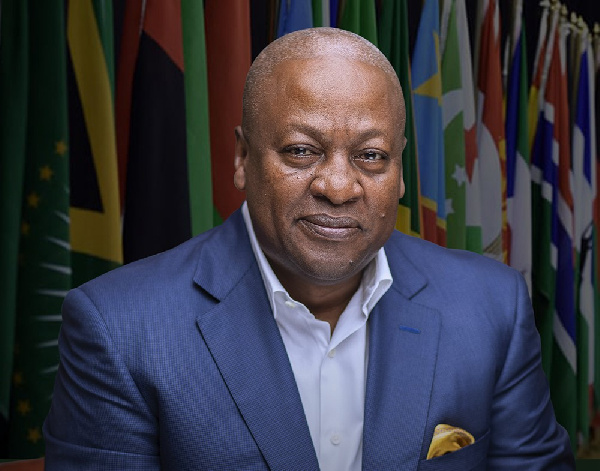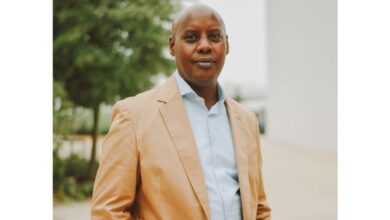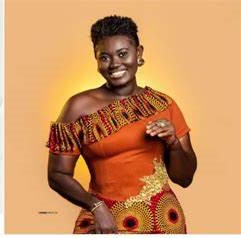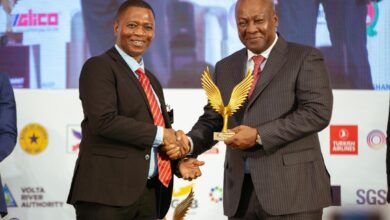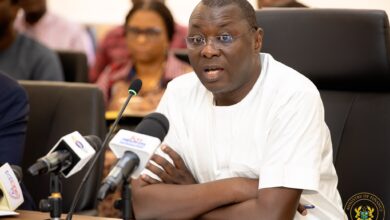Part 2 – From Artefacts to Artistry: In Conversation with Emmanuel D’Offay and the Artists of Hidden Hands of Kumasi
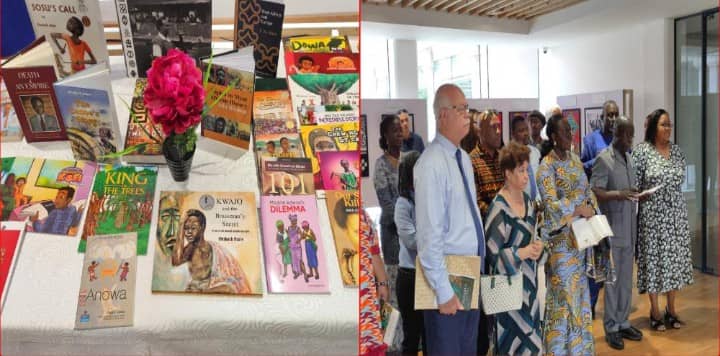
Celebrating The Hidden Hands of Culture
In this extended dialogue, Emmanuel D’Offay reflects on preserving heritage and fostering connections between Seychelles and Ghana. Joining the conversation are Kwadwo Owusu Acheampong and Emmanuella Opoku Asante, the creators of Hidden Hands of Kumasi – Weaving Stories Through Textiles and Lenses, who share their journey of highlighting the unseen artisans behind Ghanaian culture.
Engaging Future Generations
Q: How do you ensure younger Seychellois remain connected to their heritage?
Emmanuel D’Offay: We must actively teach them. That means integrating culture into everyday life through history lessons, cultural activities, and creative initiatives. Culture isn’t just about preserving the past; it’s a tool for building community, addressing social issues, and fostering self-worth. If we make it a core part of national development, it becomes a way to inspire pride and unity across generations.
A Vision for Seychelles’ Cultural Identity
Q: If you could curate a project defining Seychelles’ cultural identity on a global scale, what would it be?
Emmanuel D’Offay: I would start with designing a national costume that truly reflects Seychelles’ culture and history—something that’s uniquely us. Beyond that, I’d work to ensure Seychelles is recognized globally as a hub for culture and heritage, a place where stories, art, and tradition are celebrated and shared.
Legacy and Impact
Q: What do you hope your legacy as a curator will be?
Emmanuel D’Offay: My art is my legacy. It’s a lifelong commitment to fighting against slavery, discrimination, and human trafficking. Even as a curator, I remain an artist at heart, and my work reflects those values. I want to inspire others to use art as a force for change and a tool for preserving the stories that shape us.
Q: If you could sum up your experience curating these exhibitions in one word, what would it be?
Emmanuel D’Offay: Fantastic. These projects were personally and professionally rewarding. They allowed me to bridge historical and artistic narratives in ways that were both meaningful and uplifting.
Through the photography of Kwadwo Owusu Acheampong and the storytelling of fourth-generation textile trader Emmanuella Opoku Asante, Hidden Hands of Kumasi- Weaving Stories Through Textiles and Lenses,brings unseen narratives to light. Acheampong’s portraits reveal the authenticity of his subjects in unguarded moments, bridging the tangible and intangible. His work reflects his dual career as an engineer and photographer—building physical connections while capturing cultural ones.
In this iteration, we glimpse into the life of a master Kente weaver who encodes the events of his time—past and present—into patterns, colors, and placements, creating a wearable fractal of society. We also meet Afia Serwaa, one of the top five GTP distributors in Kejetia Market, whose expertise as a trader ensures the continuation of textile traditions across generations. Together, their stories celebrate the interwoven nature of Ghanaian culture, where every thread, pattern, and fabric carries meaning.
Meeting the Artists Behind Hidden Hands of Kumasi
Our conversation continues with the creators of Hidden Hands of Kumasi – Weaving Stories Through Textiles and Lenses, Kwadwo Owusu Acheampong and Emmanuella Opoku Asante.
The Inspiration Behind Hidden Hands of Kumasi
Q: What inspired this exhibition?
Kwadwo Owusu Acheampong: It all began with a desire to shine a light on the artisans, traders, and weavers who are the backbone of Ghanaian culture. These are the people behind the art and textiles we admire, but they often go unnoticed. Through my photography, I wanted to capture their humanity, their emotions, and the everyday beauty of their work.
Emmanuella Opoku Asante: For me, it’s deeply personal. My family has been in textiles for generations, and I’ve seen the love, effort, and stories woven into every thread. This project is about honoring that legacy while showing how our traditions evolve. I wanted to tell the stories of the people who bring these textiles to life—stories of resilience, creativity, and cultural pride.
Collaborating with Creative Seychelles
Q: What has it been like working with Creative Seychelles?
Emmanuella: It’s been nothing short of amazing! I came here expecting a cultural exchange, but what I found was so much more—friendship, inspiration, and a deeper appreciation for our shared heritage. The Creative Seychelles team welcomed us with open arms and made collaboration seamless.
Kwadwo: It’s been transformative. I’ve worked on cultural projects in Ghana, but this experience opened my eyes to new ways of storytelling. The passion for culture here in Seychelles is palpable, and it inspired us to push the boundaries of our work.
Cultural Reception and Future Projects
Q: How do you think your work will resonate with Seychellois audiences?
Emmanuella: I believe it will strike a chord. Seychelles, like Kumasi, values storytelling and cultural expression. There’s a shared appreciation for the artistry and the people behind it, so I hope our exhibition sparks meaningful connections.
Kwadwo: Definitely. The stories of weavers and traders are universal—stories of pride, resilience, and creativity. I think the audience here will relate to these themes and see parallels with their own heritage.
Q: What’s next for you after this collaboration?
Emmanuella: I’m excited to continue building bridges between Ghana and Seychelles through art and textiles. Back home in Kumasi, the arts scene is alive with innovation, and I want to take the inspiration I’ve gained here and bring it into new projects.
Kwadwo: I plan to expand this project, documenting even more untold stories of artisans and sharing them with new audiences. This is just the beginning of a journey that I hope will inspire others to celebrate the hidden hands behind our cultures.
Cultural Parallels Between Seychelles and Ghana
Q: What similarities have you noticed between Seychellois and Ghanaian cultures?
Emmanuella: Both cultures share a vibrant love for art, storytelling, and color. It’s amazing how much we have in common in the ways we express ourselves and honor our heritage.
Kwadwo: I agree. Storytelling is at the heart of both cultures, whether through fabric patterns, oral traditions, or visual art. There’s also a shared pride in preserving and celebrating our histories.
Final Reflections
Q: If you could sum up your experience in Seychelles in one word, what would it be?
Emmanuella: Inspiring.
Kwadwo: Transformative.
For Kwadwo and Emmanuella, Hidden Hands of Kumasi – Weaving Stories Through Textiles and Lenses is more than an exhibition; it’s a bridge between cultures and a celebration of the unsung heroes who shape Ghana’s heritage. Their work reminds us that art is a universal language, connecting communities and preserving traditions.
As they continue their journey, they leave an indelible mark on both Kumasi and the Seychelles arts scene. Their collaboration with Creative Seychelles exemplifies the power of shared creativity and the importance of amplifying the voices of the hidden hands shaping our cultures.
Visit Hidden Hands of Kumasi – Weaving Stories Through Textiles and Lenses at the National Library in Seychelles and discover the vibrant threads of artistry and heritage that unite us all. The story awaits you!
Araba Hackman, Ghanaian fashion designer, cultural advocate, and founder of Alabah and Zaida Mansa, has dressed global icons like Beyoncé and Serena Williams and Akon. She champions African heritage through her designs and initiatives like The King in Exile, Hidden Hands of Kumasi – Weaving Stories Through Textiles And Lenses exhibitions, bridging history and identity with modern expression.
